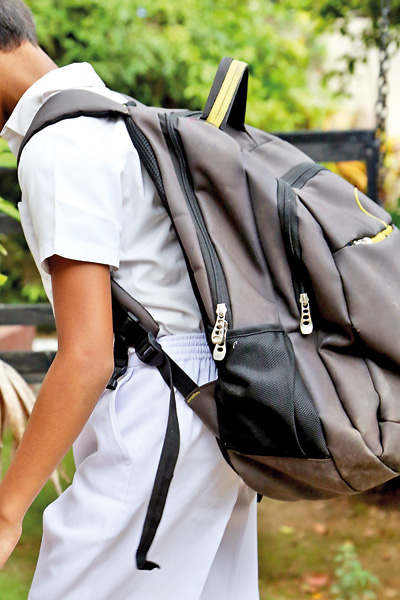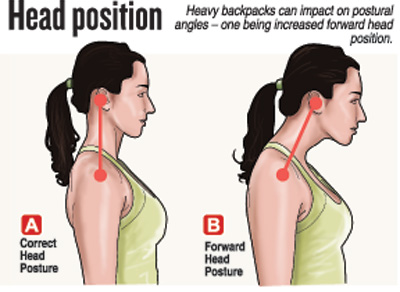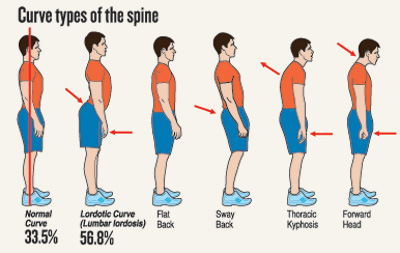News
Heavy book bags are bad for children’s health
Schoolchildren, especially those in the growth stage at 11 and 12 years old, are facing a major health hazard. The heavy book bags under which they are stooping like beasts of burden are impacting on their health.

Almost bent in two for the weight of the bag. Pic by M.A. Pushpa Kumara
The evidence is on the table. No longer is it what we see or assume and the researchers who conducted this crucial study have written to the Education Ministry of their findings, hoping that urgent measures will be taken to reduce this burden immediately, in turn, preventing this health hazard.
The study has been conducted by Professor in Paediatric Neurology Dr. Jithangi Wanigasinghe of the Department of Paediatrics and Lecturers in Physiotherapy Chamali Wickramasinghe, Cinthuja Pathmanathan & Wageesha Wijesiriwardana and Chulani Truxy of the Department of Allied Health Sciences, all from the Faculty of Medicine, University of Colombo.
“The stack of thick books that children, particularly adolescents, have to take every day to school is having an adverse impact on their developing spine, causing stress on it,” reiterates Dr. Wanigasinghe, lamenting that it does not seem to be getting the attention and redress it needs from the authorities even though this issue has been highlighted before.
She asks: Why is no one concerned about this vital segment of our population?
Ms. Wickramasinghe, meanwhile, points out that their study demonstrated the bio-mechanical effect of carrying such a heavy load. This was something which had not been proven up to now.
The study titled ‘The effect of school bag weight on musculoskeletal complications in schoolchildren from Colombo’ has been conducted among 214 students (101 boys and 113 girls) in the age-group 10-15 years from four national schools. Picked from 41 schools through random sampling, the four were a mixed school, two girls’ schools and a boys’ school.
Having followed the required protocols including securing ethical approval and authorization from all concerned such as consent from the parents and assent from the children, the study team had fanned out to these four schools and set about taking the relevant measurements which included the body weight of the children and the bag weight that they were carrying.
They had also distributed a questionnaire among the participants which gave them an insight into the distance the children carried their bags, their perceived pain and pain sites as well as what treatment they had sought for their pain.
Dr. Wanigasinghe focuses on images that we see every day on the roads before and after school times. While the different types of bags include backpacks/double-strap bags, single-strap bags, sports bags and hand-held/dragging bags, a majority of schoolchildren carry their ‘educational loads’ mostly in backpacks.
“These don’t have proper workplace ergonomics and are loaded with books and supplies for the whole day. The long-term effect on the body due to heavy backpacks has not been studied much. However, the repetitive stress of carrying heavy school bags may contribute to the high prevalence of complications in the musculoskeletal system among schoolchildren,” she says.
Getting down to technicalities, Ms. Wickramasinghe explains that they measured the ‘Ranges of Movement’ (ROM) in the neck region in these children with and without school bags using a bubble inclinometer. They also analysed some postural angles – such as the cranio-horizontal angle (CHA), the cranio-vertebral angle (CVA) and the sagittal (relating to the line between the bones of the skull) shoulder posture (SP) – photographically, using the MB-Ruler (the triangular screen ruler version 5.3).
Spinal curves had also been measured using the flexi-curve ruler which helped to analyse the type of curvature of the spine. The variables linked to measurements with and without the school bags had been compared using the paired sample t-test in the SPSS version 21, she says.
The Sunday Times understands that ROM measurements included forward bending, backward bending, side bending and rotation of the neck.
Dr. Wanigasinghe points out that studies have shown that the maximal loads recommended for adult backpack carriers varied from 25%-40% of the body weight. However, children and adolescents experience a period of accelerated growth and development in skeletal and soft tissues where the structures were markedly different from adults.
“The recommended weight limit for backpacks in children and adolescents has been identified as 10% of the body weight due to different reasons.
If it is more than 10%, the heavy weight affects lung function and breathing in children and also the posture which tends to stoop. Some studies have revealed that with a bag-weight greater than 10%, there is a considerable effect on cardio-respiratory endurance and various body angles, she adds.
| Neck movement hindered and posture affected | |
| The findings of the study are an eye-opener and need the immediate attention of the educational authorities. They are: The average bag weight of the study group was 6.33 kg. This was 16.57% of the body weight and above the recommendation which is <10% of the body weight. About 64% of the students had a bag-weight between 10-20% of their body weight, while 20.6% had a bag weight more than 20% of their body weight. Only 15% had a bag weight within the recommended range (<10% of body weight). The average bag-weight was heaviest (7.04 kg) in Grade 6 children (10-11 years), followed by those in Grade 7. The effects of carrying these bags were: Pain related to bag carrying was seen in 68% and was as high as 91.8% in Grade 7 children. The pain was mostly around the shoulder region (51.1%). Most of the other study participants experienced pain around both the neck and shoulder regions. There was a significant positive association between the school bag carrying duration and the occurrence of pain. Ranges of all the neck movements were significantly reduced when carrying the school bag compared to the normal range for the age-group. The highest differences in the Ranges of Movement (ROM) were found among Grade 7 children – 10.940, 11.67, 9.730 & 12.40 respectively. The mean cranio-horizontal angle (CHA) was abnormally increased, while the cranio-vertebral angle (CVA) was abnormally decreased when carrying the school bag. The highest variations in this difference were found in Grade 7 children. The mean kyphosis index was within the normal range. Kyphosis is an excessive outwards curve of the spine which causes abnormal rounding of the upper back. It is known as ‘roundback’ or in severe form as ‘hunchback’. But the kypholordotic variations of the spine were determined as normal only in 33.5% of the children. A majority (56.8%) had a lordotic spinal curve (lumbar lordosis>thoracic kyphosis). As such, the study team has drawn up some significant conclusions – Carrying backpacks causes musculoskeletal pain and a significant reduction in the range of neck movements. Carrying heavy backpacks can cause a significant effect in postural angles thus causing increased forward head position and other postural mal-alignments. Poor posture may cause permanent alterations in the spinal curves among schoolchildren. Changes in alignment of the neck and spine can produce strain of joints in the vertebral column and soft tissues as well as imbalanced muscle performance. |

